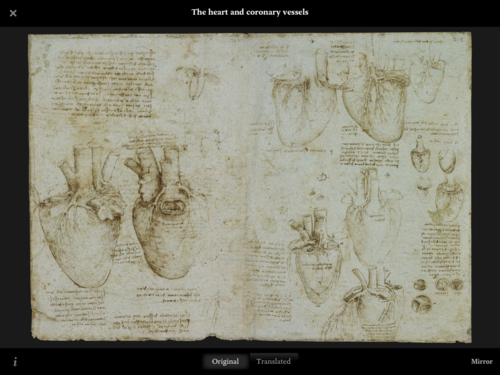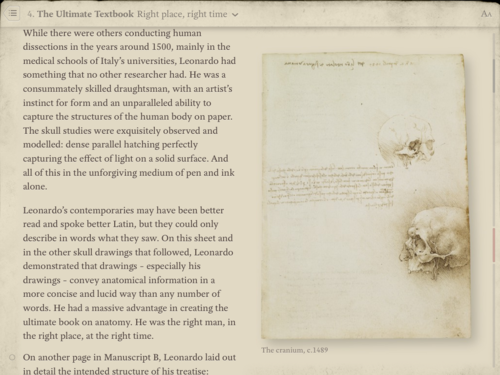
The Leonardo da Vinci: Anatomy app collects the artist’s incredibly intricate anatomical drawings and theories amid eleven chapters of explanatory text. Viewed in landscape mode, it’s elegant and satisfying, providing real insight into the ways his studies (and, later, his dissections) of the human body affected his painting, and establishing him as a groundbreaking scientist.
He went out of his way to capture muscles at rest. In one study the model even had his arms supported by sticks so as to put no strain on the shoulder muscles. Leonardo reasoned that, while it is important to know how to draw the muscles in tension, it is just as important to know how to draw them when relaxed: “You should not make all the muscles of your figures conspicuous; even if they are shown in the correct place they should not be made too evident, unless the limbs to which they belong are engaged in the exertion of great force or labour. The limgs that are not under strain should have no such display of musculature. If you do otherwise you will have produced a sack of nuts rather than a human figure.”
For Leonardo it was a combination of slack and tense muscles that implied movement – if every single muscle was tensed, the body was locked in position.
“Had he published the treatise on anatomy that he’d planned," says Alasdair Sooke, "Leonardo would be considered one of the great scientists of the Renaissance — if not all time. But because he never managed to do so, his anatomical drawings essentially disappeared from view for hundreds of years — which meant that they had little impact on scientists of a later age.”

At Download the Universe, Carl Zimmer calls the app "simply the best ebook about science that I have ever encountered.“
– Maud Newton
